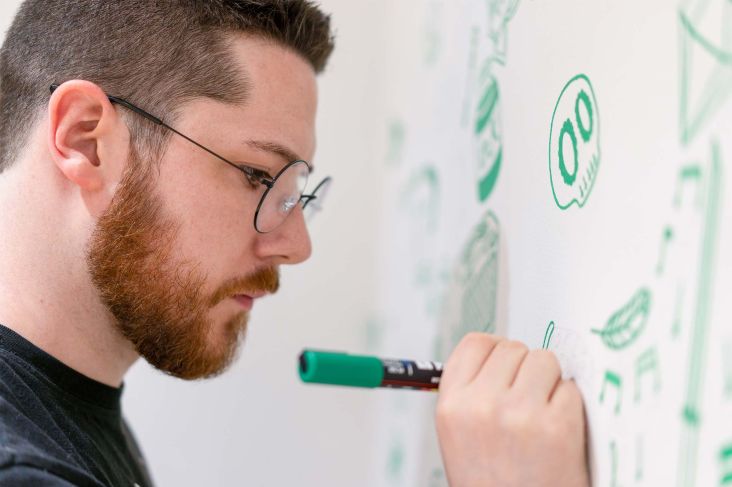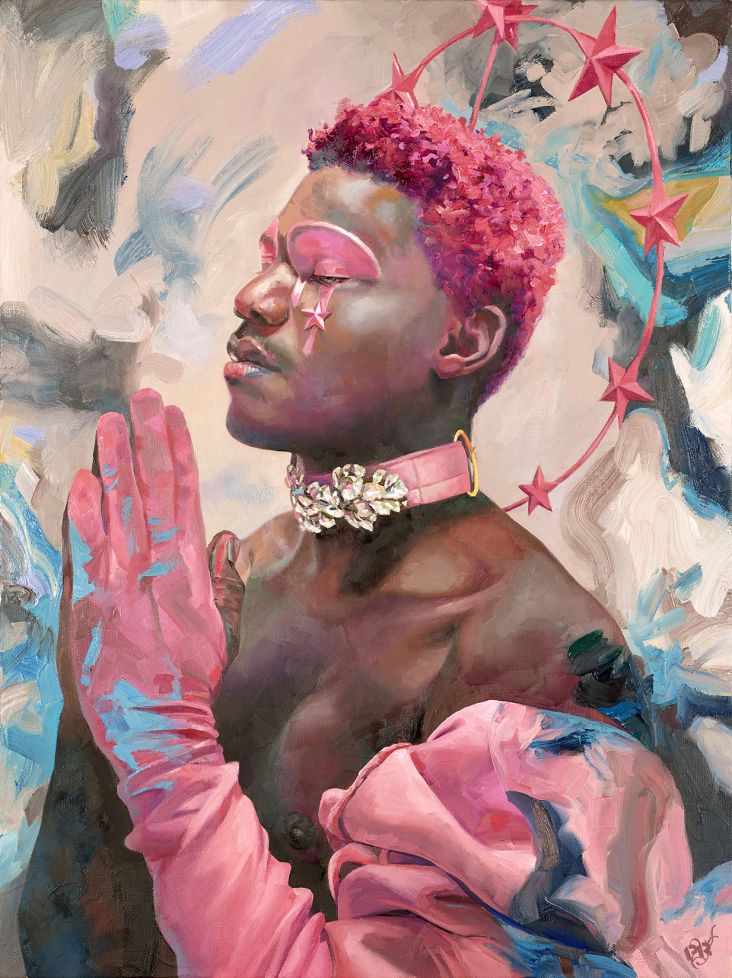Eight things everyone should do when creating a motion design showreel
It doesn’t matter how great your CV is, or how well you can talk a good game. You’re going to get that job or freelance gig primarily because of the quality of your motion design showreel. And so it’s well worth putting in the effort to get it right.

Image licensed via Adobe Stock
To help you along the way, we’ve collected together some top expert tips from some leading names in the industry. From motion designers to directors and recruiting managers, these are the people who ultimately make the decisions on whether or not to hire people, so what they have to say is worth listening to.
Read on to find out exactly what to do – and what not to do – to ensure your showreel is the best it can be.
1. Keep it short
When it comes to applying for a motion design job, it’s generally true that the more experience you have, the more likely you are to get the position. And you might think that means the longer your showreel, and the more clips it showcases, the more you’ll impress people.
There might be a certain logic to this approach, but speak to anyone in the industry who has to watch a lot of showreels, and you soon discover that’s very, very wrong. The exact opposite is true: the shorter, the better.
Why? Because as George Dyson, a London-based director/motion designer and a mentor at Created, explains: “Keeping it short is not only easier for a potential employer to digest, but it means you've reduced your work to only the best pieces.”
“Don’t pad your showreel with filler content,” adds Thiago Maia, a motion, design director and founder of Cookie Studio and See No Evil. “Quality is more important than length.”
Whoever you speak to at the upper-end of the industry, you hear the same thing. And yet so many don’t follow this advice and turn in showreels that are bloated and overlong.
It’s understandable why: you’ve put a lot of work into creating each one of your pieces, and you want to be praised for all of them. But in the real world, that’s never going to happen.
Unless you’re selective, you’re just going to rub employers up the wrong way. So take a deep breath, be ruthless, and edit it down to only the very best footage you have. And that’s probably going to be your most recent.
“It’s tempting to put lots of examples on your showreel to illustrate how much work you have created,” says Harry Jones, general manager at Electric Theatre Collective. “However, more often than not, your earlier work won't be as strong as your most recent. Be selective and choose less work of a higher standard. Not only does this mean your potential hirer is only looking at your best work, but they will also note you can self-critique and can identify your stronger work.”
2. Start with the best work
As we’ve established, your showreel should only contain your best work. And so it logically follows that you start with the absolute very best, and grab the viewer’s attention right from the get-go.
“Remember that the person you’re aiming it at will be very busy, so the quicker your work gets to the point, the more likely you are to get a response,” explains Ingi Erlingsson, managing director and creative director of Golden Wolf.
Yes, we understand why you might want to leave your very best clip to the end, to finish with a bang and leave them with a ‘wow factor’. But that’s frankly naive because, in the real world, people don’t always have time to watch more than a second or two before getting distracted. So make those first few seconds count, and they’re far more likely to keep watching right through to the end.
3. Focus on your favourite type of work
Although you should only include your best work in your motion design showreel, there is an obvious caveat. If, for example, all you include is 2D animation, then that’s the kind of work you’re going to be offered in future. So if you’ve decided you’d rather focus on, say, 3D animation going forward, make sure you include plenty of that instead.
“Your showreel is your shop window,” points out Thiago Maia. “It’s what you want to do and want to be doing again and again. The type of work you put in your showreel is the type of work you’re going to get.”
Of course, this does often present a bit of a chicken-and-egg problem: how do you get the kind of work you want in future if you haven’t yet been commissioned to do any? That’s where personal projects come in.
It’s pretty simple: think about what you want to do and, if you don’t have enough commercial projects in that area under your best, set yourself personal projects that showcase your skills. As long as the work you create is good enough, no one is frankly going to care whether it was created for a client or yourself. And just think – there’ll be no client to worry about, and you can completely let rip with your creativity!
4. Put in the hours
The most ironic thing we hear from motion designers about their showreels is that they haven’t spent enough time on them, because they’ve had too much other work. As we mentioned earlier, your showreel is your gateway to a better future, so it shouldn’t be thought of as something you “fit in”, between projects - it’s a project in its own right, and should be treated as the most important one.
After all, it’s not just the work you include, but how you select, curate, edit and present it, points out Jason Peacock, senior motion designer for Venturethree. “Potential employers aren’t just scrutinising the sequences within it, they’re looking at the whole piece including your title slide, song choice, the flow of the edit and any narrative you’ve incorporated,” he notes. “Time and consideration should be taken to plan and execute the order of your work and how it fits together.”
Doing all this properly means setting aside a proper amount of time to do so because there's a lot to consider. What story is your showreel telling? What's its biggest takeaway, and if people only see the first 10 seconds, what will they remember? What skills are being demonstrated? Do things move at the right pace, and does each piece flow from one to the other? Does the music work with the clips?
All of these things and more need to be thought about carefully, so don't rush but take your time and work methodically until you get there.
5. Don’t use templates
Pre-built presets and templates can be a lifeline for the modern motion designer, particularly for education and training, and occasionally on commercial projects where time is short, and budgets are small. But just don’t do so on anything you include on your motion design showreel.
“Simply stringing together a reel consisting of templates is a big no-no,” says Jason Peacock senior motion designer for Venturethree. “Tutorials and free downloads are there to get you started, but it’s up to you to push the ideas further and create something that you can call your own.”
6. Don’t let your name linger
Your motion design showreel is there for one reason, and one reason alone: to sell you and your skills. And so it’s important to introduce your details, preferably right at the start.
However, one thing employers tell us is that it shouldn't linger for too long. “The opening shot of your reel should contain your name and contact details and stay on screen for five seconds max, then go straight into a concise reel demonstrating your best work,” says Harry Jones. “No one has time for a name lingerer.” So now you know.
7. Seek out feedback
When you pour your heart and soul into something, it can be upsetting to hear even the smallest amount of negative feedback. But - and we can’t stress this enough - when it comes to your motion design showreel, you need to suck it up.
There’s no better way to improve your showreel than showing it to others in the industry and getting a constructive critique. You need to open your ears to every piece of criticism, think about it carefully, and consider how something that feels negative can be turned into a positive.
Always remember that feedback is not personal; it’s normally coming from people who are trying to help you. So seek it out before the interview, digest it, and act upon it because constructive critique can often be the difference between a motion design showreel that’s merely good and a genuinely great one.
And after the interview, if you didn’t get the job, email the interviewer and ask for feedback. Nine times out of ten, you should get it, and it will help you immeasurably in preparing for the next time.
8. Check for typos
It’s a tale almost as old as time itself: a motion design showreel that contains excellent work, beautifully presented and edited together… but is let down by a spelling mistake in the title or credits.
Typos look sloppy, and no one wants to hire a careless person, particularly for a job that requires attention to detail. So check, check, and check again - and get others to do so as well. It’s well worth the extra time you spend to make sure you get it right.
To learn more about how to become a motion designer, visit Created today and learn about their industry-led motion design course.





 by Tüpokompanii](https://www.creativeboom.com/upload/articles/58/58684538770fb5b428dc1882f7a732f153500153_732.jpg)


 using <a href="https://www.ohnotype.co/fonts/obviously" target="_blank">Obviously</a> by Oh No Type Co., Art Director, Brand & Creative—Spotify](https://www.creativeboom.com/upload/articles/6e/6ed31eddc26fa563f213fc76d6993dab9231ffe4_732.jpg)
















